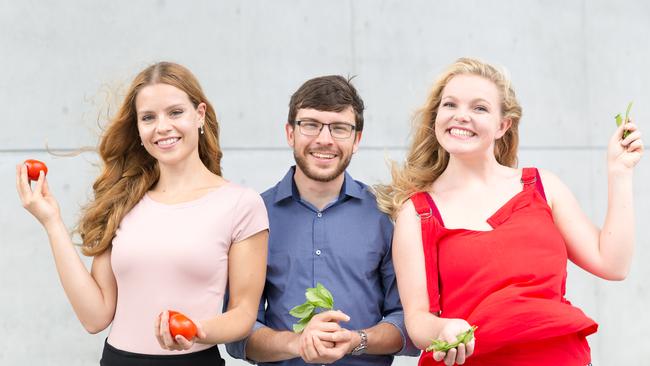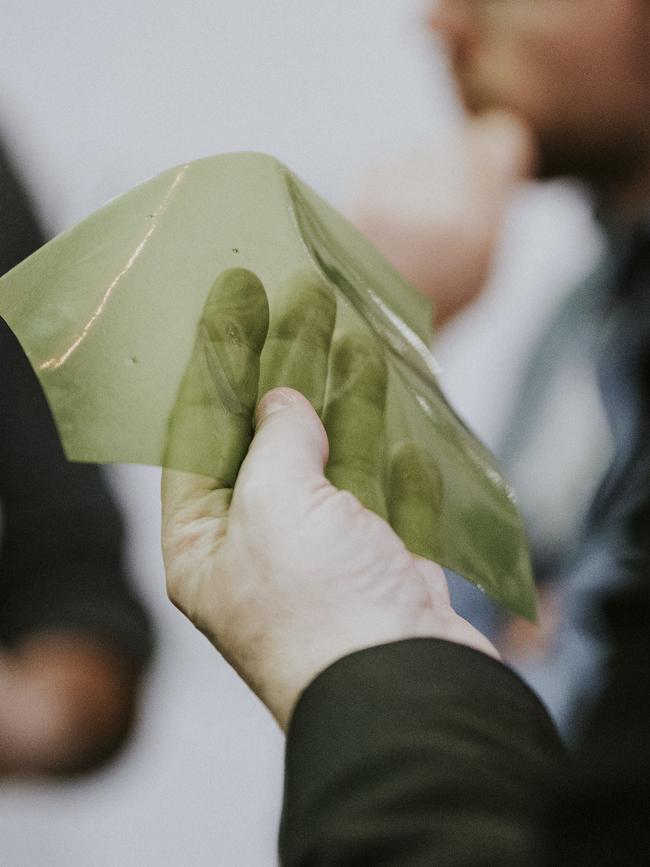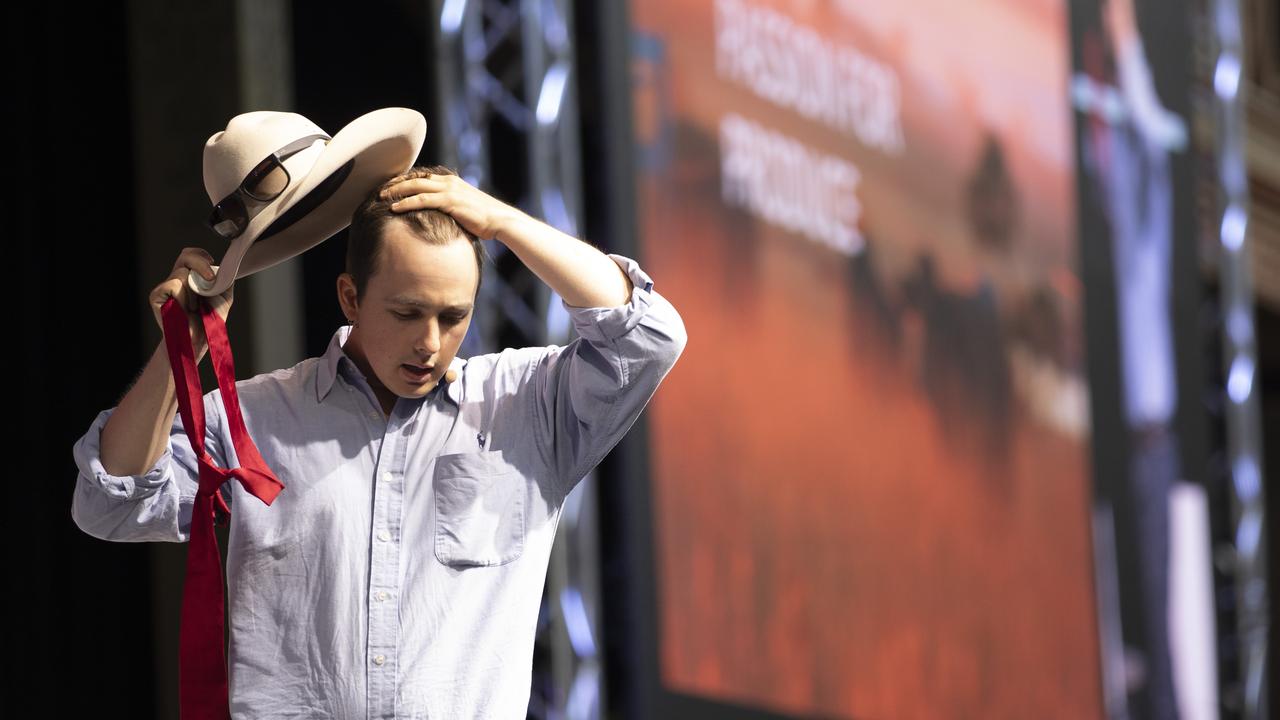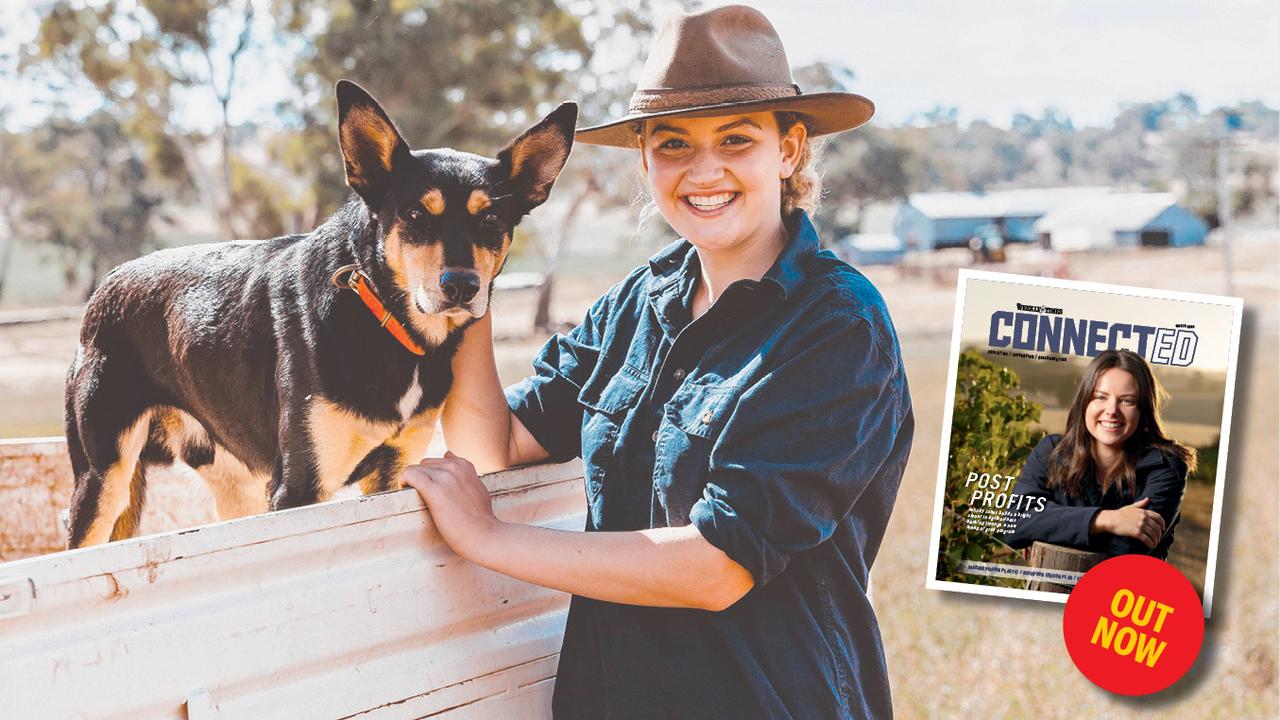Carapac sustainable packaging does good at every step
THREE graduates recycle waste to create revolutionary packaging that returns nutrients to soil, writes BETHANY GRIFFITHS.

HOW CAN the leftovers from a Christmas seafood platter reduce the amount of plastic waste in landfill and improve the soil in vegie gardens?
Just ask Kimberly Bolton, Michelle Demers and Jared Wood, the three young brains behind sustainable packaging business Carapac.
The university graduates have developed a way to turn prawn and crab shell waste into a plastic-like material that can be used as packaging.
Their biodegradable “prawn plastic” comes in pliable and stiff versions, which can be used to make cling wrap, herb sleeves and punnets.
DRONES SET TO BECOME FARMER’S FRIEND IN CRIPPLING DROUGHT BATTLE
RURAL GRADUATES CHART CAREERS IN AGRIBUSINESS BANKING
SCHOLARSHIP HELPS STUDENT TO BECOME FIRST GENERATION GRAIN FARMER
After use, the packaging can be composted or added to garden beds, where it breaks down, returning nitrogen to the soil as a fertiliser.
The three entrepreneurs combined knowledge from their respective degrees — business, agriculture and chemistry — when they were grouped together during the University of Sydney’s “Inventing the Future” program.
It was during this 12-week course that they came up with the concept of turning crustacean shells into a biodegradable material.
“When we were looking at developing a solution for single-use plastics we wanted to make something that was doing good at every step along the way, not just starting off good at the beginning and not thinking about the end product. We wanted to focus on more of a circular economy approach,” says business graduate and Carapac chief executive Kimberly.
“That’s how we came up with taking a waste product (crustacean shells) and then making it into something useful, which is the packaging.
“It has even more benefits because it can extend the shelf life of the product and then turns into a fertiliser,” she says.
THREE CHEERS
The entrepreneurs make their product using imported crustacean and insect shell waste.
“At the moment we’re importing purified stock from frozen food processing facilities that are used in other ways such as medicinal,” Michelle says. “We hope to use insect and prawn farm waste in Australia when it gets a bit bigger.”

The benefits for soil were discovered by Michelle, a plant pathologist, who wanted to find a positive end use for the product.
Given her area of expertise, Michelle is acutely aware of declining soil quality and the effect agricultural tilling systems have on the organic matter in soils.
She says finding ways to counteract degradation and increase soil health is “really crucial to having healthy plants and therefore healthy crops”.
“What our product does is actually put nutrients back into the soil and that can increase the soil organic matter.”
When added directly to garden beds, Carapac packaging takes three to six weeks to fully break down. An organic substance in the crustacean shells called chitin slowly releases nitrogen, which acts as a fertiliser.
Carapac’s founders say the material they have developed also has “embedded antifungal properties” that helps keep fruit and vegetables fresh for longer, compared to plastic.
Michelle hopes the triumvirate of benefits — increasing shelf life of produce, reducing need for single-use plastic and improving soil quality — will have a positive impact on the ag industry.
When developing the material, Kimberly says they took inspiration from the fact many other plastic substitutes are not as environmentally friendly as people think.
“We did a lot of research into different examples of biodegradable packaging and we found that they’re actually not as sustainable as what you perceive them to be,” she says. “Some of them still take about five years to break down.”
C OST BENEFITS
Kimberly says they wanted to create an option that was not only better for the planet, but also the hip pocket.
“Other biodegradable products were coming in at about five or six times the cost of traditional plastic and based on our estimations we will come in around three or four times the cost,” Kimberly says. “So we’re undercutting other biodegradables.”
The company has developed prototypes for a wrap, herb sleeves and strawberry punnets, hoping to supply agricultural producers who need to protect produce during transport, and want to cut plastic use.
Kimberly says they have spent the past year working on development and customer research.
“We’ve been doing more product development, more customer interaction to see where the demand is in the market, and now we have a really good understanding of where to go from here,” she says. Within the next few months Kimberly expects the company will be ready to expand.
“In the next stages we’ll look at growing our team and investing in some machinery and then moving into a large-scale facility to produce en masse,” she says.
They hope applications for the material’s technology will have a much wider reach in the future.
“We can make so many other products out of our material,” Kimberly says. “Things like plastic bags, or for other industries, like industrial or agricultural, but at this stage we are focused on fresh produce across Australia and then eventually we want to get into the market worldwide.”
INVENTION FACTORY
The University of Sydney’s Inventing the Future program crosses the usual boundaries of disciplines to encourage innovation on a new level.
Postgraduate students from the faculties of business, architecture, design and planning, science and engineering can apply for the program, in which they are put into groups to tackle a problem that will affect future generations.
Business graduate Kimberly Bolton says the program is unique in that it encourages collaboration across areas of expertise.
“Having the interdisciplinary aspect is really powerful and interesting and you learn so much from each other,” she says.
“You learn how to think in the different disciplines’ mindsets, which is something that I would have never been able to do otherwise.”
The sessions teach students the process of invention, from researching and creating an idea to developing prototypes and pitching to industry.
sydney.edu.au



